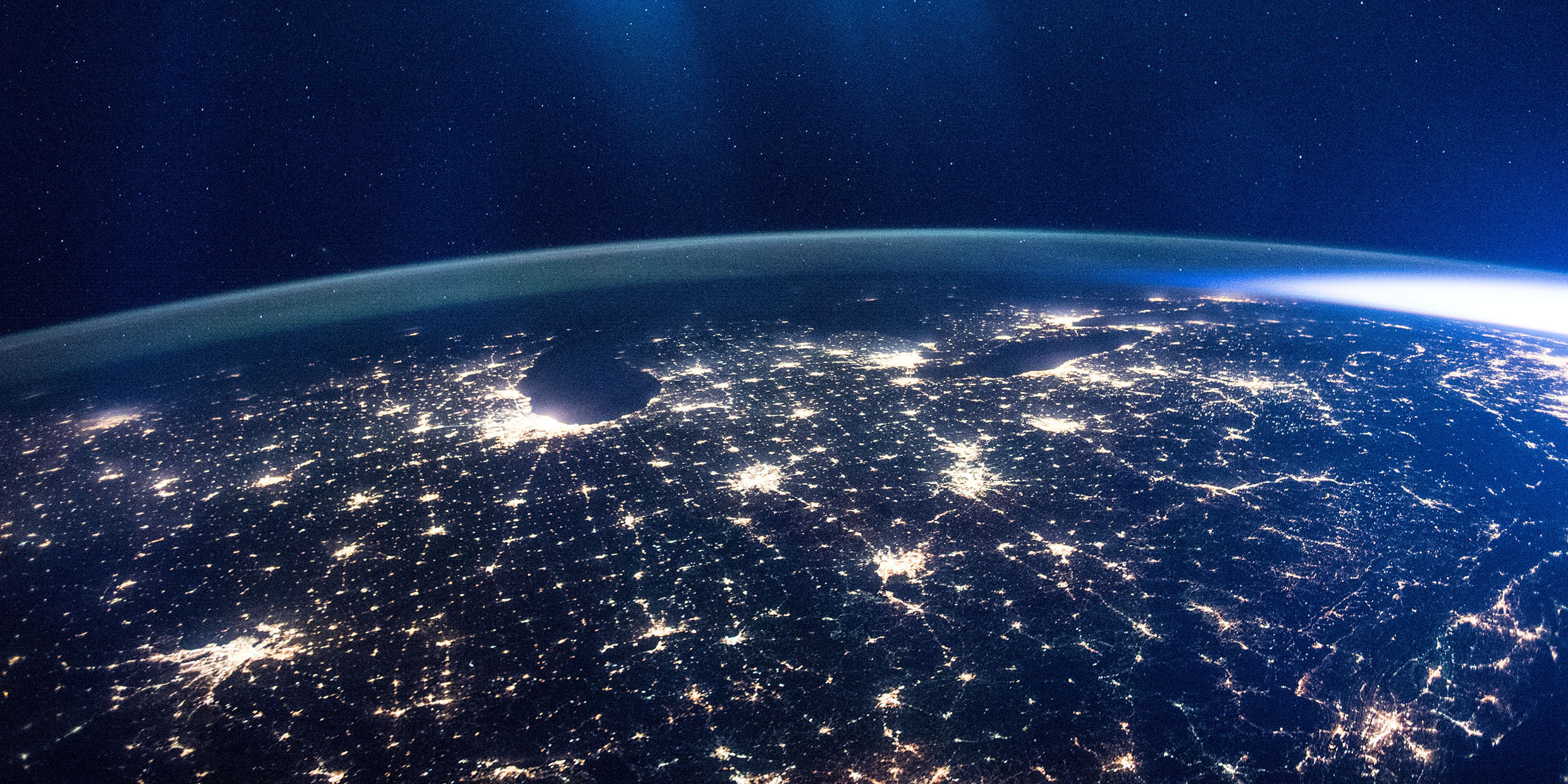Originally published 25 June 1990
Long before humans actually set foot on the moon they visited that place in their imaginations. One of the earliest lunar travelers was Francis Godwin, who in 1638 published a book called The Man in the Moone about a Spaniard named Domingo Gonsales who travels to the moon and back by attaching himself to a flock of wild swans.
Twelve days after taking leave of Earth the birds deposited Gonsales on a high lunar hill, where he began to take note of the incredible sights and wonders of his new world. Not the least of the wonders was the blue-and-white Earth, suspended like an ornament in the lunar sky.
Only Apollo astronauts have observed with their own eyes what Francis Godwin imagined, but most of us have now seen NASA photographs of Earth from space, surely among the most beautiful and provocative artifacts of the 20th century.
The photographs show Earth in its phases — crescent, half, gibbous, full — confirming spectacularly what every schoolchild learns: The Earth shines only by reflected sunlight.
Or does it? Even Domingo Gonsales, on his swan-assisted journey into space, might have looked back and observed the Earth shining by its own light, and since his time the self-luminosity of our planet has increased dramatically.
Nighttime luminosity
The planet has many sources of light that illuminate its night side. Lightning storms, volcanic eruptions, and naturally-ignited fires all glimmer in the darkness. It has been estimated, for example, that something like 100 lightning strokes per second occur over the Earth’s surface, flashing like fireflies.
Auroras illuminate vast tracts of terrestrial night. These brilliant displays are ignited over the polar regions when atoms and molecules in the upper atmosphere are struck by electrons blowing in from the sun. Photographs of Earth from space show the planet wreathed with a permanent a halo of light — now visible in the north, now in the south, depending on which pole is in darkness — waxing, waning, and quavering in response to activity on the sun.
Life too adds feeble emanations to the planet’s glow. Glowworms and fireflies, luminescent toadstools and flashlight fish, light-emitting plankton and bacteria, all combine protein with oxygen to radiate a cold biological light. Once I swam in a dark cove in Maine and with every stroke stirred up a planktonic luminescence caused by millions of dinoflagellates, one-celled plants that flash microscopic strobes when disturbed; the sea shimmered in eddies of light.
But of Earth’s living creatures, only one contributes significantly to the planet’s self-luminosity. The artificial aura of Homo sapiens is easily visible from space.
Nighttime images of Earth first became available from U.S. Air Force weather satellites in the early 1970s. Aerospace engineer Thomas Croft described these images in a 1978 article in Scientific American. Subsequent spacecraft have yielded more images and astronomer Woodruff Sullivan has recently combined many photographs to yield a worldwide nighttime portrait of the planet.
The United States, for example, glimmers with a thousand splotches and streamers of light, which are almost exactly congruent with population-density maps. We are clearly a people busy at night.
The congruence of light and population is most pronounced in the developed nations. A striking exception is the contrast between relatively dark France, where street lighting is kept to a minimum, and France’s more profligate neighbors, Germany and Britain. But undeveloped regions of the world also contribute significantly to the planet’s nighttime luminosity.
Agricultural fires, used to clear land or remove the residue of last year’s crops, are prominent in nighttime images of such places as sub-Sarahan Africa and Central and South America.
Brilliant gas flares
Far and away the brightest artificial sources of light on the planet are giant waste-gas flares associated with the major oil-producing regions of the world. The gas comes out of the ground with oil, and is burned away. Certain parts of Libya, for example, glow on the nighttime images more fiercely than all of urbanized Italy — with light produced by energy going up in smoke.
One of the most curious bright spots in Earth’s night is the Japanese squid-fishing fleet which operates in the Sea of Japan. The boats use electric lights to attract squid to the surface of the sea, producing altogether something like 200 megawatts of light, enough to make the fleet appear in nighttime images as another island in the heavily-populated Japanese archipelago.
Looking back at Earth today, space traveler Domingo Gonsales would see a planet glowing far brighter than the one he saw in 1638. To a large extent it glows with the luminosity of waste. The prodigious burning of tropical forests and oil-field waste gas certainly bodes ill for the planet’s fragile atmosphere. Even in the case of urban street lights, every lumen of energy cast upwards to space serves no useful purpose on Earth. Astronomers, in particular, are increasingly frustrated in their work by this wanton brightening of the night sky.
Our intemperate, will‑o’-the-wisp planet grows wastefully brighter all the time.



